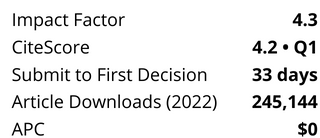Polymer-aided flocculation is defined in this study as the coagulation and flocculation process which is accomplished by using alum in conjunction with a small dosage of polymer. Polymer is commonly used to improve flocculation performance; however, few in-depth studies of mixing requirements when using polymer as an aid have been reported. Presented is an evaluation of the effect of mixing on the kinetics of polymer-aided flocculation. The study found that the optimum G̅f-values occurred at 70 to 100 s−1, such that G̅ftb-values (Camp Number) were in the range of 113,000 to 144,000. The limited improvement in kinetics achieved by increasing the G̅f-value beyond 100 s−1 will probably not justify the higher energy consumption. Moreover, experimentation has shown that the maximum G̅f-value recommended for the design is G̅f=200 s−1 (G̅ftb=252,000), and the critical mixing rate occurred at G̅f=400 s−1 (G̅ftb=432,000), beyond which significant floc break-up will occur. The optimum G̅f-value determined from the study suggests that the currently designed flocculators using alum alone can be used when polymer is used as a coagulant aid. Thus, the use of polymer as a coagulant aid can improve the coagulation and flocculation efficiency in existing systems.
Skip Nav Destination
Article navigation
February 2000
This article was originally published in
Journal of Water Supply: Research and Technology-Aqua
Article Contents
Research Article|
February 01 2000
Effect of mixing on the kinetics of polymer-aided flocculation
Stephanie Young;
Stephanie Young
1Environmental Engineering Program, Department of Civil and Environmental Engineering, University of Alberta, Edmonton, Alberta, Canada T6G 2M8
Search for other works by this author on:
Daniel W. Smith
1Environmental Engineering Program, Department of Civil and Environmental Engineering, University of Alberta, Edmonton, Alberta, Canada T6G 2M8
Telephone: +1 (780) 492 4138; Fax: +1 (780) 492 8289; E-mail: dwsmith@civil.ualberta.ca
Search for other works by this author on:
Journal of Water Supply: Research and Technology-Aqua (2000) 49 (1): 1–8.
Citation
Stephanie Young, Daniel W. Smith; Effect of mixing on the kinetics of polymer-aided flocculation. Journal of Water Supply: Research and Technology-Aqua 1 February 2000; 49 (1): 1–8. doi: https://doi.org/10.2166/aqua.2000.0001
Download citation file:
Sign in
Don't already have an account? Register
Client Account
You could not be signed in. Please check your email address / username and password and try again.
Could not validate captcha. Please try again.




%20cropped.png?versionId=5947)